
(a)
To sketch:
The repeat unit structure of polychlorotrifluoroethylene.
(a)
Answer to Problem 1QAP
The repeat unit structure of polychlorotrifluoroethylene is sketched and shown in
Figure 2.
Explanation of Solution
The repeat unit of polychlorotrifluoroethylene is arrived from the repeat unit of polyethylene.
The repeat unit molecular structure of polyethylene is shown in Figure 1.

The repeat unit of polyethylene contains two carbon atoms and four hydrogen atoms.
The replacement of three hydrogen atoms by three fluorine atoms and one hydrogen atom by one chlorine atom gives the repeat unit molecular structure of polychlorotrifluoroethylene that is shown in Figure 2.

(b)
To sketch:
The repeat unit structure of poly (vinyl alcohol).
(b)
Answer to Problem 1QAP
The repeat unit structure of poly (vinyl alcohol)is sketched and shown in
Figure 3.
Explanation of Solution
The repeat unit of poly (vinyl alcohol)is arrived from the repeat unit of polyethylene.
The repeat unit molecular structure of polyethylene is shown in Figure 1.

The repeat unit of polyethylene contains two carbon atoms and four hydrogen atoms.
The replacement one hydrogen atom by one alcohol atom gives the repeat unit molecular structure of poly (vinyl alcohol) that is shown in Figure 3.

Want to see more full solutions like this?
Chapter 14 Solutions
MATERIALS SCI + ENGR: INT W/ACCESS
- Can you show why the answer is that for this question using second order differential equations, instead of laplace transformsarrow_forwardI need help to solve the following case, thank youarrow_forwardIf you could help me answer these questions in matlab that would be great, I provided an additional picture detailing what the outcome should look like.arrow_forward
- The evaporator of a vapor compression refrigeration cycle utilizing R-123 as the refrigerant isbeing used to chill water. The evaporator is a shell and tube heat exchanger with the water flowingthrough the tubes. The water enters the heat exchanger at a temperature of 54°F. The approachtemperature difference of the evaporator is 3°R. The evaporating pressure of the refrigeration cycleis 4.8 psia and the condensing pressure is 75 psia. The refrigerant is flowing through the cycle witha flow rate of 18,000 lbm/hr. The R-123 leaves the evaporator as a saturated vapor and leaves thecondenser as a saturated liquid. Determine the following:a. The outlet temperature of the chilled waterb. The volumetric flow rate of the chilled water (gpm)c. The UA product of the evaporator (Btu/h-°F)d. The heat transfer rate between the refrigerant and the water (tons)arrow_forwardhi I would like to get help to resolve the following casearrow_forwardA fully grouted reinforced masonry wall is to be constructed of 8-in. CMU. The wall height is 18feet. It is assumed to be simply supported. The wall is to be designed for an out-of-plane seismicload of 52 lbs./ft.2, which can act in either direction. The wall also supports a roof dead load of600 lbs./ft. and a roof live load of 300 lbs./ft. along the wall length. The roof loads have aneccentricity of 2.5 inches. Since there is seismic load, load combinations (6) and (7) in Chapter 2of ASCE 7-22 should be considered. In these two load combinations,horizontal seismic loadhE =andvertical seismic loadvE = . You may ignorevE in this problem for simplicity. The masonryhas a specified compressive strength of 2,500 psi. (a) Use the strength design provisions of TMS402 to determine the size and spacing of the vertical bars needed. Use the P-δ analysis method inSection 9.3.4.4.2 of TMS 402 to determine Mu. (b) Repeat the design using the momentmagnification method in Section 9.3.4.4.3 instead.arrow_forward
- Could you help me to know features of the following concepts: - defragmenting. - dynamic disk. - hardware RAIDarrow_forwardThe blade support of a hacksaw is subject to compression when a blade is installed and tightened. What is the state of stress (total combined stress) at A in MPa if the compression in the support is 1,524 N. Note: pay close attention to what is compression and what is tension and use a negative sign for the former. 100 mm 8 mm 3 mm 75 mm A 8 mm 3 mm B 50 mmarrow_forwardwhat is a feature in the Windows Server Security Compliance Toolkit, thank you.arrow_forward
- The answer is not 4.378 ft/sarrow_forwardThe factor of safety for tipping of the concrete dam is defined as the ratio of the stabilizing moment due to the dam's weight divided by the overturning moment about OO due to the water pressure (Figure 1). Suppose that aa = 5 mm , dd = 2 mm , hh = 7 mm . The concrete has a density of ρconcρconc = 2.5 Mg/m3Mg/m3 and for water ρwρw = 1 Mg/m3Mg/m3arrow_forwardThe answer is not 0.293 marrow_forward
 MATLAB: An Introduction with ApplicationsEngineeringISBN:9781119256830Author:Amos GilatPublisher:John Wiley & Sons Inc
MATLAB: An Introduction with ApplicationsEngineeringISBN:9781119256830Author:Amos GilatPublisher:John Wiley & Sons Inc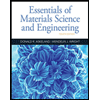 Essentials Of Materials Science And EngineeringEngineeringISBN:9781337385497Author:WRIGHT, Wendelin J.Publisher:Cengage,
Essentials Of Materials Science And EngineeringEngineeringISBN:9781337385497Author:WRIGHT, Wendelin J.Publisher:Cengage,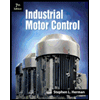 Industrial Motor ControlEngineeringISBN:9781133691808Author:Stephen HermanPublisher:Cengage Learning
Industrial Motor ControlEngineeringISBN:9781133691808Author:Stephen HermanPublisher:Cengage Learning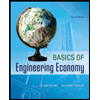 Basics Of Engineering EconomyEngineeringISBN:9780073376356Author:Leland Blank, Anthony TarquinPublisher:MCGRAW-HILL HIGHER EDUCATION
Basics Of Engineering EconomyEngineeringISBN:9780073376356Author:Leland Blank, Anthony TarquinPublisher:MCGRAW-HILL HIGHER EDUCATION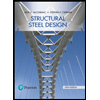 Structural Steel Design (6th Edition)EngineeringISBN:9780134589657Author:Jack C. McCormac, Stephen F. CsernakPublisher:PEARSON
Structural Steel Design (6th Edition)EngineeringISBN:9780134589657Author:Jack C. McCormac, Stephen F. CsernakPublisher:PEARSON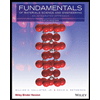 Fundamentals of Materials Science and Engineering...EngineeringISBN:9781119175483Author:William D. Callister Jr., David G. RethwischPublisher:WILEY
Fundamentals of Materials Science and Engineering...EngineeringISBN:9781119175483Author:William D. Callister Jr., David G. RethwischPublisher:WILEY





